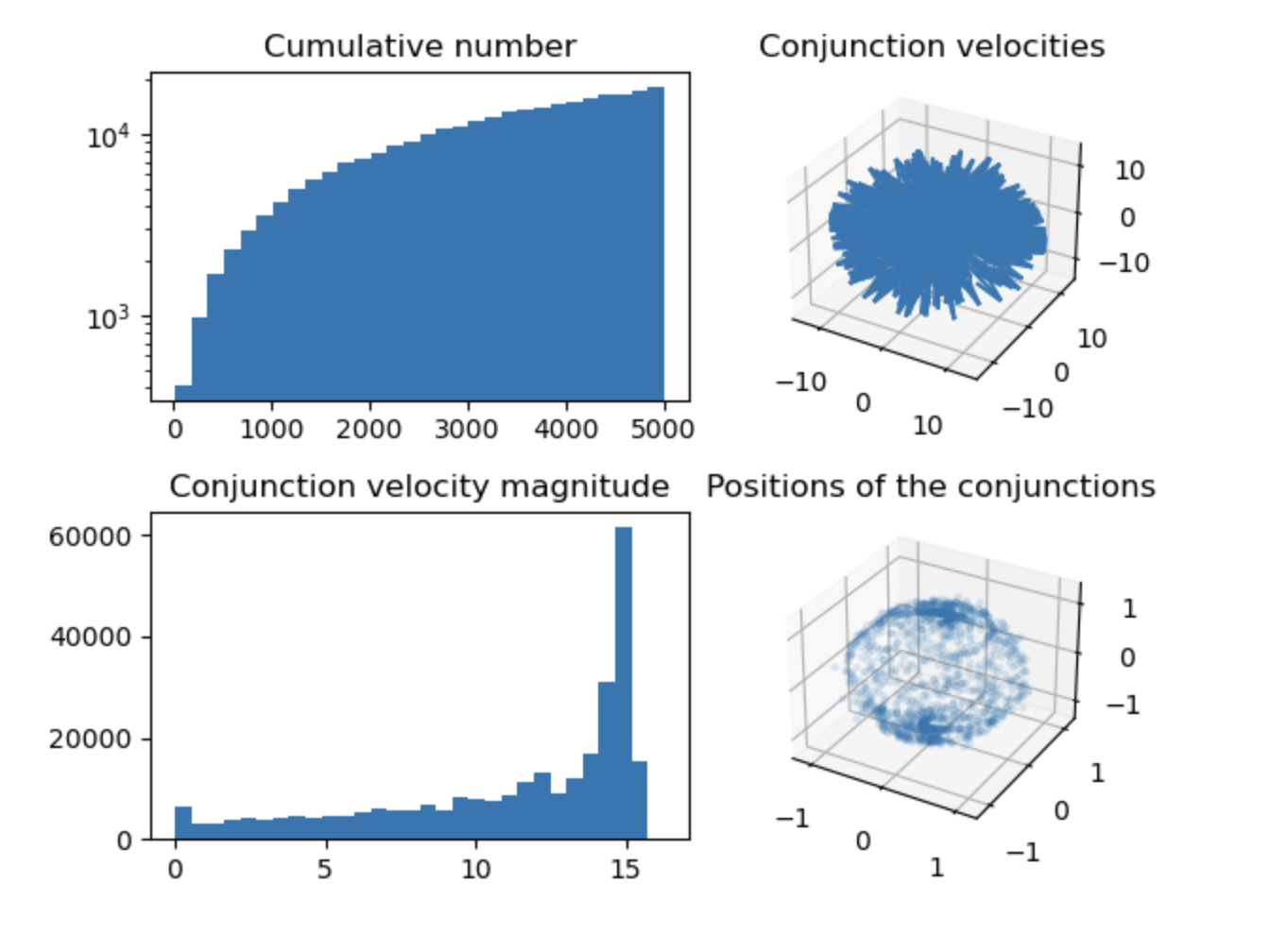Revisiting Debris evolution models
Background

Due to the slow but steady increase of satellite launches as well as the resulting collisional dynamics, the number of orbiting objects (including active satellite and inactive debris) around our planet is steadily increasing. Monitoring and predicting the evolution of orbital environments is thus of an everincresing importance: unfortunately, it also is a computationally intensive task. With the recent development of the open source code cascade the computational time to simulate 20 years of the Low Earth Environment is reduced to only a few hours including the guarantee to detect all collisions while controlling the error on the dynamics at machine precision.
A possible alternative to tackle such a complex computation, commonly considered as state-of-the-art in terms of speed, is the use of the Cube algorithm [1] which makes use of the kinetic theory of gases and reduces the computational time mentioned above by more than 2 orders of magnitude. While some past studies have been made on the quality of the predictions made using Cube, and modification proposed (see for example [3]) there is no convincing result that validate any of these models based on the kinetic theory of gases against a ground truth.
Some preliminary work done internally at ESA' ACT found a possible underestimation of the collision probability computed by the use of Cube and other similar approaches [3].
Project goals
In this project we are revisiting the problem of modelling the long term evolution of debris clouds. We are establishing several ground truths on the number of collisions to be expected by modelling, using cascade, a number of different orbital environments. By comparing these results to the outputs of simulations made using the Cube approach, we can quantitatively find the correction factors needed to adjust the Cube approach and propose algoritmic modifications that allow to develop a new reliable and accurate debris evolution model.
We also take a look at N-body simulations of gas molecules and their collisions [2] as a possible source of ground truths to tune Cube -like approaches.
References
[1] Liou, J-C. "Collision activities in the future orbital debris environment." Advances in Space Research 38.9 (2006): 2102-2106.
[2] Biscani, F. "The Maxwell-Boltzmann distribution using Heyoka" https://bluescarni.github.io/heyoka.py/notebooks/The%20Maxwell-Boltzmann%20distribution.html (2021)
[3] Wang, Xiao-wei, and Jing Liu. "An introduction to a new space debris evolution model: SOLEM." Advances in Astronomy 2019 (2019): 1-11. APA https://www.hindawi.com/journals/aa/2019/2738276/